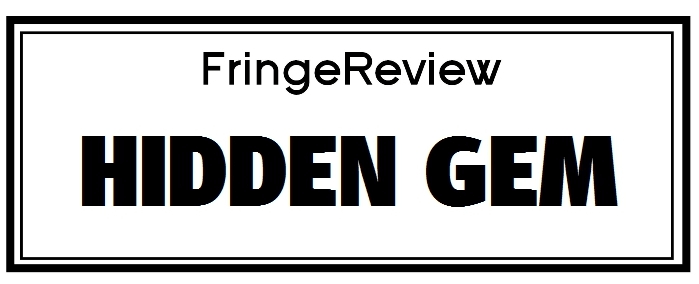FringeReview UK 2019
New Music Brighton Jon Rattenbury and Brian Ashworth Guitar Duo
Jon Rattenbury and Brian Ashworth Guitar Duo

Genre: Live Music, Music
Venue: Friends’ Meeting House, Brighton
Festival: FringeReview UK
Low Down
Jon Rattenbury and Brian Ashworth one of the best-known guitar duos on the south coast enjoy a particular way with the classical guitar. Known for 19th century repertoire they champion the 21st and have given several premieres of works included here.
Review
Jon Rattenbury and Brian Ashworth are one of the very best-known guitar duos on the south coast and enjoy a particular way with the classical guitar.
Known for 19th century repertoire they champion the 21st and have given several premieres of works included here. And of course there’s a couple of premieres here, not least one that’s waited for a proper one for 36 years. So there’s other 20th century works to leaven the new with the (often) still freshly landed.
Jon Rattenbury played the fist solo piece: Phil Baker’s Narration One is as he said an equivalent of a 19th century Ballade. It’s an attractive piece, elements of suggested storytelling in effect a sequential series of harmonic twists, quite gentle ones, with figurations and differences.
Peter Copley’s reconstructed his 1981 Sonatina for Two Guitars written while studying at the Royal academy. It’s good to know he could write so well when still so young. The work benefits from Copley’s determined harmonic idiom at a time wen melodic material was being readmitted in the academies, at least at their scalloped edges.
The idiom’s Waltonian to anyone who knows Walton’s 1971 pieces for Julian Bram. The headings Allegro Giocoso, Andantino and Allegro con brio tell you it’s going to be an upbeat jazzy piece, (Martinu was often using ‘giocoso’) full of jazzy post-Walton syncopations. Its lyricism surfaces as it has to the brief Andantino but this never lingers and feeds directly into the con brio of the finale – memorable punchy and worth publishing now it’s been reconstructed – as are all the pieces here.
Guy Richardson’s Cantilena for Two Guitars grew out of a solo piece in 2003 written fro his brother, which follows an attractive pattern: Introduction, then main theme answered by second guitar, a rhythmic exchange and a restatement of modified material. Richardson’s music is quietist – and shares with baker and Barry Mills an individual rediscovery of harmony refracted through 21st century musical experience. Richardson’s is spare, elusive and usually (not here) a palimpsests of harmonies like clouds over a lake – which was the subject of a piano piece. The whole speeds up into a acceleration of itself, the Interlude and opening material (the opening theme) thrown back and forth to fast coda.
John Hawkins’ Take Two is really attractive jazzy fanfare, but complicated by different jazz and other effects so it’s a visceral showpiece too, full of rappings and knockings and other effects. Jazz rhythms are thrown back and forth and make a melodically well-defined splash – a fine opening or encore piece.
Richard Rodney Bennett (1936-2012) embraced a bewildering variety of styles but some works settle into classics, not least his Five Pieces from 1968 written for Julian Bream. They inhabit that alert, fragile jazzy harmonic idiom Bennett used in some films scores near the time – Far From the Madding Crowd was just behind him. It’s a strong work, memorable and redolent of that nervy liberation.
Phil Baker’s Duo for Two Guitars is a three-piece work with wholly unexpected access to harmonies never really appreciated by this writer till now. The first entitled ‘… at a distance’ utilised a duet sequence of variations ushering in a more contrapuntal ‘…poles apart’ which involves an extremely attractive melodic figure, almost jazzy – a pentatonic scale around G major, with as Baker puts it each ‘in a disjunct tonal relationship each guitar limiting itself to its own scale.’ Yes but it comes together memorably, like two strands of DNA. The final ‘… perfect harmony’ is ‘primarily harmonic… with funky syncopations and melodic decoration.’ In fact it’s spare, contemplative, laid out in a sloe descant of energy and rather like elements dispersing into quiet,.
Barry Mills is one of the most acclaimed and prolific composers living in the south-east, with an international reputation. Two Pieces consists of to contrasting though complimentary works, about to be recorded.
His recent ‘Falling Leaves’ written especially for the duo is brief and precisely evocative. Rapped edge-of-soundboard jars us into a sonically woody world, yet soon settles into a falling figure, melancholic and memorable, which proceeds to a more radiant centre, falling back into its descending figure before closing. Full of the quietism particular to Mills it provided a still centre to this recital. This duo are wholly of its mind, and you can see why Mills chose them.
‘Cherry Blossom’ utilised no such harmonics but went for a clean falling figure, suspended, in a gentle repeat pattern. Both pieces take on a notably lapidary Japanese quality, as you’d expect with such a title.
Both needs two outings per recital lasting barely three minutes, if that.
There was an encore – a superb very Argentinean work by Machado, fully melodic in a popular style with melodies thrown across each guitar like saddles on horses over the pampas. Exhilarating but also heart-warming.
The duo finally finished with the third Dace from Ginastera’s Estancia, an exciting piece that builds up before the very final dance. It’s good to hear some of Ginastera in this way. He wrote a more atonal Guitar Sonata Op 47 much later, but encore points up the spiced harmonies and rhythms as a wonderful send-off.
Why are New Music Brighton, its composers and this duo not better known? They’re getting recorded and many of Barry Mills and now Phil Baker’s pieces have another life on YouTube. Time to celebrate all the artists here.


















































